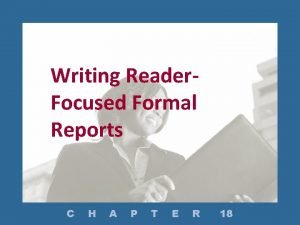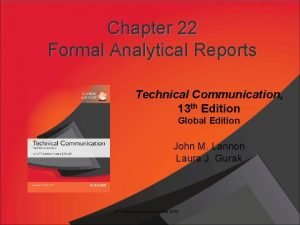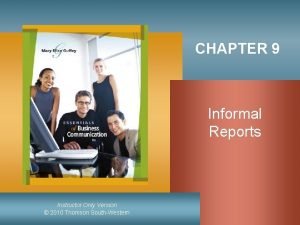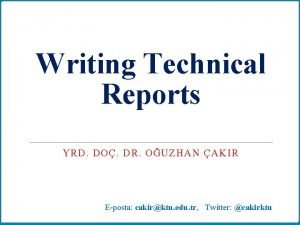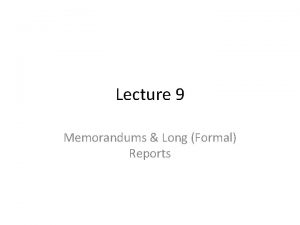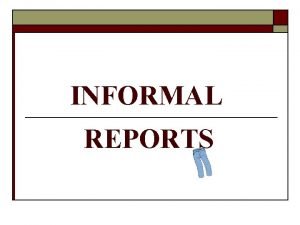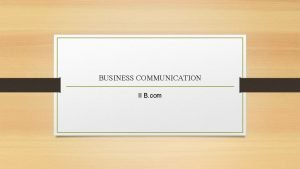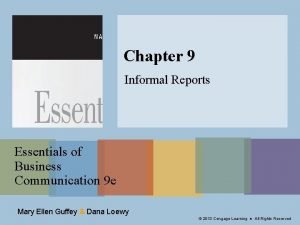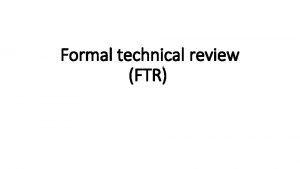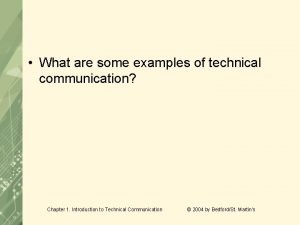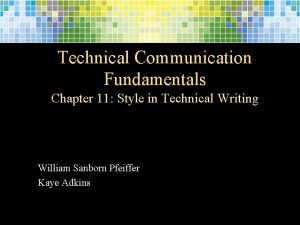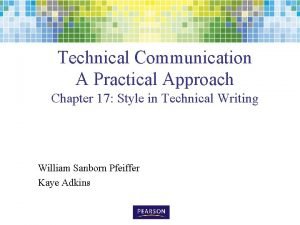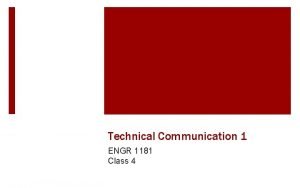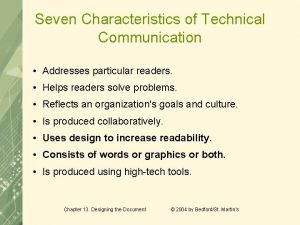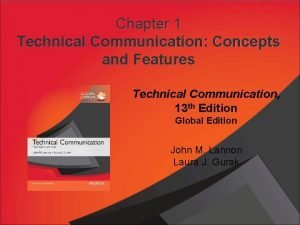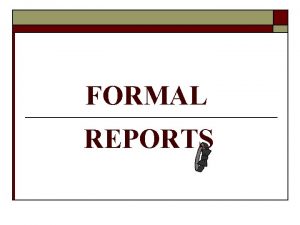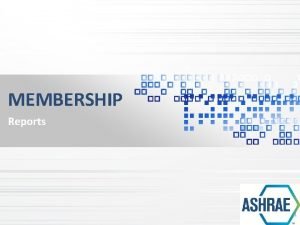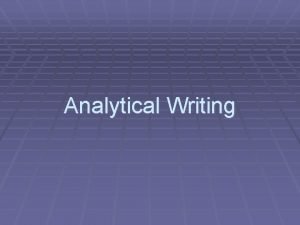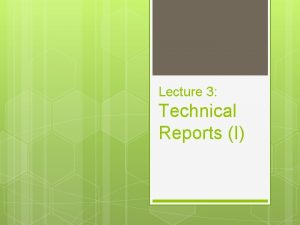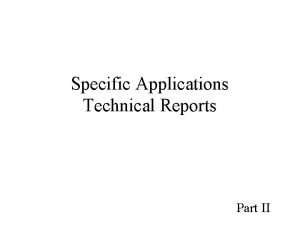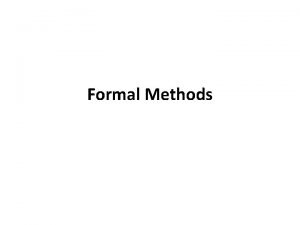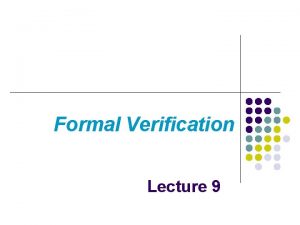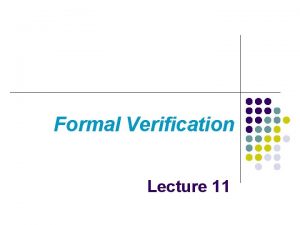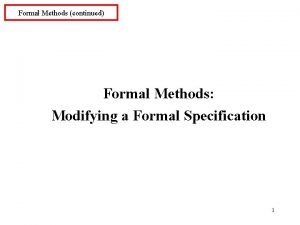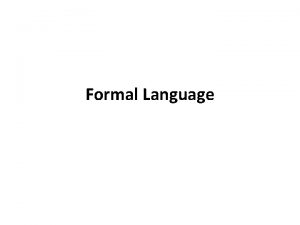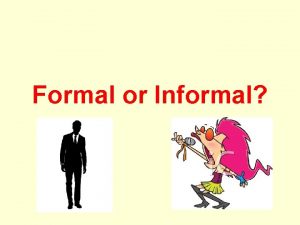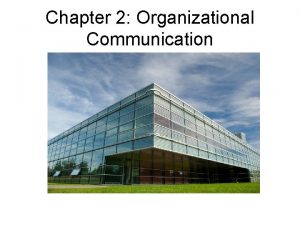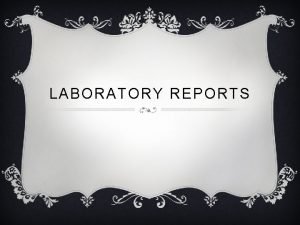Chapter 22 Formal Analytical Reports Technical Communication 13


















- Slides: 18

Chapter 22 Formal Analytical Reports Technical Communication, 13 th Edition Global Edition John M. Lannon Laura J. Gurak © Pearson Education Limited 2015

Learning Objectives Ø Appreciate the role of formal analytical reports in the workplace Ø Understand the role of audience and purpose for such reports Ø Identify three major types of analyses: causal, comparative, and feasibility Ø Know the criteria for sound analytical reasoning

Learning Objectives (continued) Ø Identify the parts that typically accompany a long report (front matter and end matter) Ø Write a formal analytical report

Formal Reports Ø Formal reports, unlike informal reports, are always analytical, rather than simply informative. They answer big questions and usually provide recommendations. Ø Written as hard copy documents rather than as a memo or email attachment, a formal report typically includes a title page, table of contents, a system of headings, a list of references or works cited, and other frontmatter and end-matter supplements.

Audience and Purpose Considerations Ø Because of their major impact on the decision -making process, formal reports are almost always written for an audience of decision makers such as government officials or corporate managers. Ø To determine the purpose of the report, consider what question or questions it will ultimately answer. Also, consider why this particular topic is timely and useful to the intended audience.

Typical Analytical Problems A formal analytical report may involve any of three types of analysis (or a combination): Ø Causal Analysis: “Why does X happen? ” Ø Comparative Analysis: “Is X or Y better for our needs? ” Ø Feasibility Analysis: “Is this a good idea? ” Ø Combined: Analytical categories overlap considerably. For example, a formal report may answer a more complex question like, “Why did X happen? Having considered that, is it a good idea to go with Y instead?

Guidelines for Casual Analysis Follow these guidelines when writing a formal report exploring causal analysis (“Why does X happen? ”): Ø Be sure the cause fits the effect. Ø Make the links between effect and cause clear. Ø Clearly distinguish between possible, probable, and definite causes.

Guidelines for Comparative Analysis Follow these guidelines when writing a formal report exploring comparative analysis (“Is X or Y better for our needs? ”): Ø Base the comparison on clear and definite criteria. Ø Give each item balanced treatment. Ø Support and clarify the comparison or contrast through credible examples. Ø Follow either a block pattern (item-by-item) or a pointby-point pattern. Ø In an evaluative comparison (“X is better than Y”), offer your final judgment.

Guidelines for Feasibility Analysis Follow these guidelines when writing a formal report exploring feasibility analysis (“Is this a good idea? ”): Ø Consider the strength of supporting reasons. Ø Consider the strength of opposing reasons. Ø Recommend a realistic course of action.

Elements of An Effective Analysis Consider all of the following elements when writing a formal analytical report: Ø Clearly identified problem or purpose: Always begin by defining the main questions and thinking through any subordinate questions they may imply. Ø Adequate but not excessive data: Worthwhile analysis, in contrast, examines an issue in depth, but filters out material that isn’t necessary for the audience’s understanding. Ø Accurate and balanced data: Always strive for accuracy and avoid stacking the evidence to support a preconceived point of view.

Elements of An Effective Analysis (continued) Ø Fully interpreted data: Interpretation shows the audience what is important and what is unimportant, what belongs together and what does not. Ø Subordination of personal bias: To arrive at the truth of the matter, evaluate your data (Is this reliable and important? ) and interpret it (What does it mean? ) at every stage, without letting your personal opinions get in the way. Ø Appropriate visuals: Graphs are especially useful in an analysis of trends. Tables, charts, photographs, and diagrams work well in comparative analyses.

Elements of An Effective Analysis (continued) Ø Valid conclusions and recommendations: Conclusions are valid when they are logically derived from accurate interpretations. Ø Self-Assessment: Continually ask yourself if you are on track. You may need to backtrack if your goal isn’t clear enough, you haven’t uncovered the right information, or you don’t agree with your anticipated recommendation. Ø Introduction: Identify your topic’s origin and significance, define or describe the problem or issue, and explain the report’s purpose. Briefly identify your research and explain any limitations or omissions.

Elements of An Effective Analysis (continued) Ø Body: Describe and explain your findings in detail. Present a clear and detailed picture of the evidence, interpretations, and reasoning on which you will base your conclusion. Divide topics into subtopics, and use informative headings as aids to navigation. Ø Conclusion: Summarize, interpret, and recommend. Although you have interpreted evidence at each stage of your analysis, your conclusion presents a broad interpretation and suggests a course of action, where appropriate.

Front Matter and End Matter Supplements Most formal reports or proposals consist of the front matter, the text of the report, and the end matter. Include the following in this order: Ø Letter of transmittal: This letter on top of the document signals its formality and can provide a variety of details, but keep them brief. Ø Title page: The title page provides the document title, the names of all authors and their affiliations, and the date the report was submitted. The title itself should exactly spell out the purpose of the report and use descriptive words, but it should not be overly long.

Front Matter and End Matter Supplements (continued) Ø Table of contents: The table of contents helps readers by listing the page number for each major section, including any front matter that falls after the table of contents. Ø List of Tables and Figures: On a separate page following the table of contents, list the tables and figures in the report, if there are more than a few. Ø Abstract or Executive Summary: The purpose of this summary is to provide a brief overview of the report for busy readers, explaining the issue, describing how you researched it, and stating your conclusions.

Front Matter and End Matter Supplements (continued) Ø Glossary: Use a glossary as the first item after the text of the report if your report contains more than five technical terms that may not be understood by all intended readers. Ø Appendices: If you have large blocks of material or other documents that are relevant but will bog readers down, place these in an appendix. Ø References or Works Cited List: If you have used outside sources in your report (and typically you should), you must provide a list of References (per APA style) or of Works Cited (per MLA style).

Review Questions 1. How is a formal report different from an informal report? 2. Who is nearly always the audience for a formal report? 3. What question does a causal analysis answer? 4. What question does a comparative analysis answer? 5. What question does a feasibility analysis answer?

Review Questions (continued) 6. What are three considerations to keep in mind regarding the data in a formal report? 7. What types of visuals are useful in formal reports? 8. Why is self-assessment important when writing a formal report? 9. What are the five front matter elements that typically appear in formal reports? 10. What are three end matter elements that typically appear in formal reports?
 How do informational reports and analytical reports differ
How do informational reports and analytical reports differ Analytical reports are always formal
Analytical reports are always formal Direct-pattern analytical reports end with
Direct-pattern analytical reports end with Dr_ouzhan
Dr_ouzhan Long formal report
Long formal report Informal reports
Informal reports Business proposal chapter 10
Business proposal chapter 10 Importance of report writing
Importance of report writing Informal report
Informal report Driver amiable analytical expressive
Driver amiable analytical expressive Formal technical reviews
Formal technical reviews Technical writing vs academic writing
Technical writing vs academic writing Technical communication examples
Technical communication examples Style of technical communication
Style of technical communication Technical writing style
Technical writing style Technical communication
Technical communication Seven characteristics of technical communication
Seven characteristics of technical communication Definition of technical communication
Definition of technical communication English for technical communication
English for technical communication
